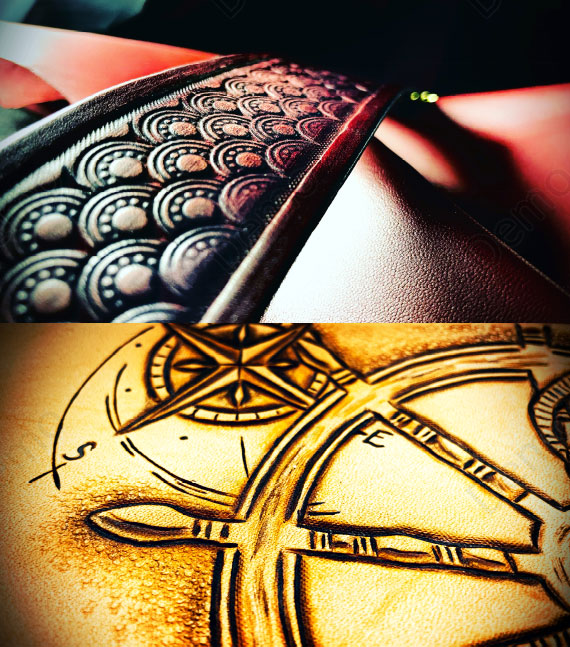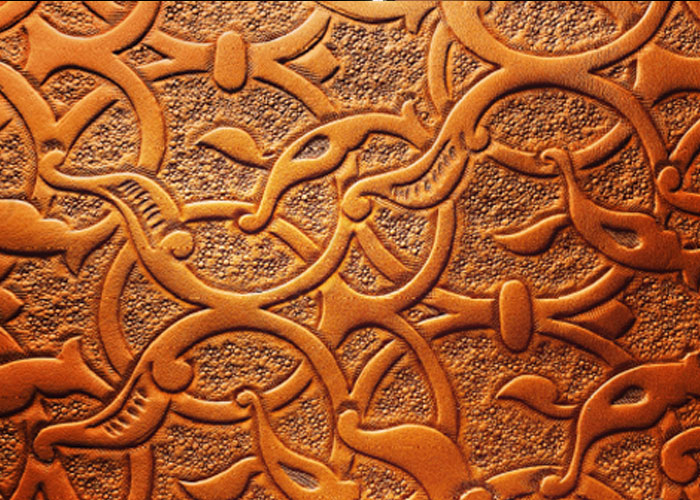
ART OF LEATHER CARVING
Leather crafting is one of the oldest traditional crafts, in particular the art of leather carving. Whilst the term “leather crafting” can be used to describe the entire gambit of constructing goods from leather, leather carving describes the specific art of giving a three-dimensional appearance to leather craft objects or works of art by cutting and stamping the surface.
The first use
of hand carved leather is lost in history, but preserved leather items have been unearthed from 3,000-year-old Egyptian tombs and Roman burial sites. Hand tooled leather has been highly valued in most early civilizations.
In the Iberian Peninsula and Andalusia region some of the earliest and most influential examples of leather tooling was amongst the Spanish Moors who decorated their homes and armour with hand-carved leather.
With the Spanish exploration of the modern world the skills used in carving artwork into leather crossed the Atlantic and spread throughout Southern and Central America, where the Moorish designs became influenced by the Aztec leather working designs prevalent at the time.
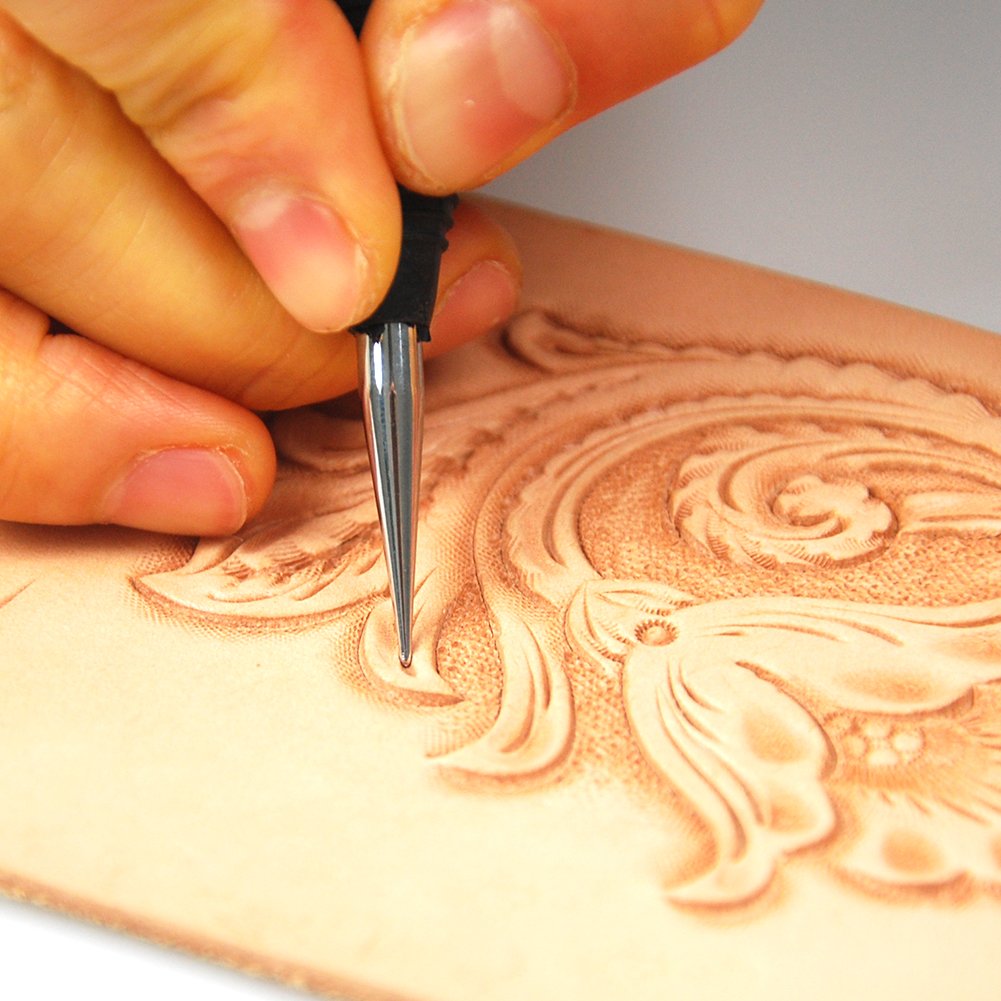
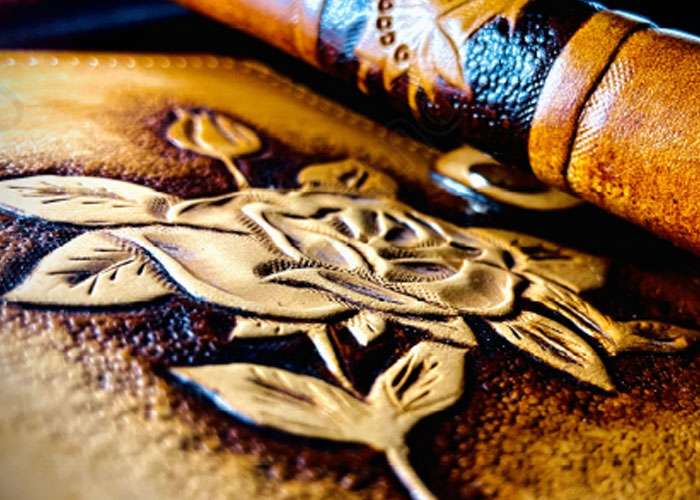
Leather carving experienced
a surge in popularity in the 1800s when leather tooling became popular among cowboys and ranchers of the “Wild West”. Elaborately tooled saddles helped express status and wealth as well as identifying individual possessions among cowboys with no horses of their own.
Leather of Western saddles, belts or bags is more frequently carved. The technique was at a high point in Europe during the Middle Ages. Nowadays, this elaborate leather work has become less prevalent. For Germany, it is estimated that less than ten percent of all saddlers are able to do such work. In the USA, carving leather is more common.
Leather carving tools Leather stamping tools
Carving is a traditional method of leather working and is used to add decoration. By means of carving tools (metal stamps cast into certain shapes), lines, grooves and patterns, such as monograms or coats of arms, are pressed, stamped and punched into the leather. Carving tools are available in many variations, shapes and sizes. They are also available with leaf shapes and embellishments.
For carving and stamping of leather various tools are used to deform or cut the leather fibres.
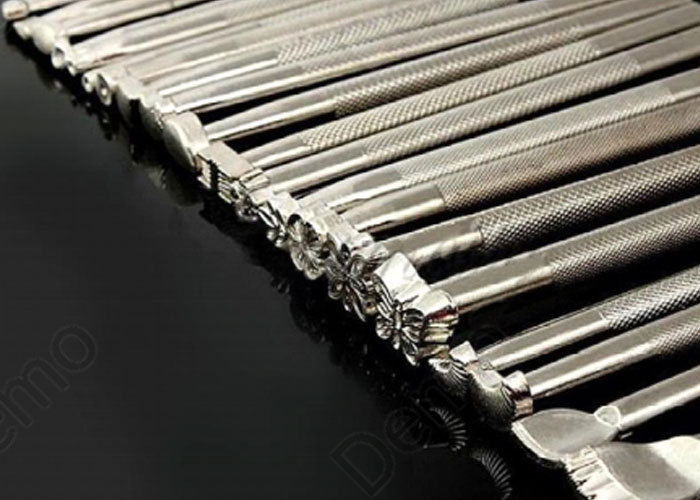
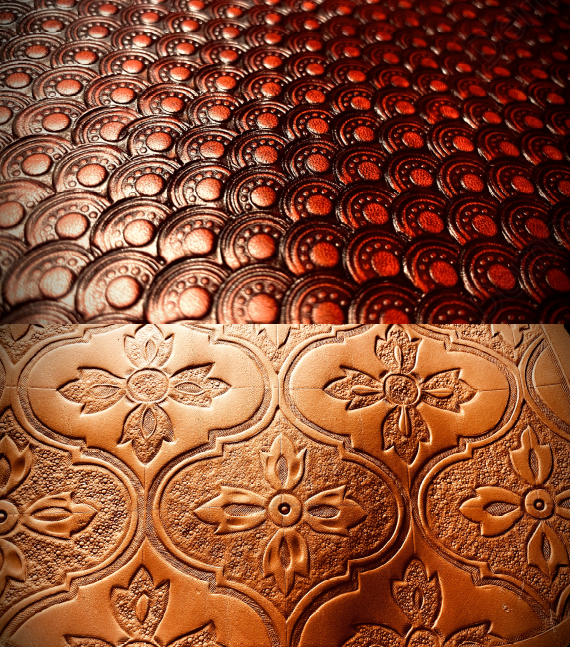
Best for carving
is thick, fine grained, Vegetable-tanned leather without binder-based finish. Such leather has the necessary stability for processing and displays the motifs much better. The motifs are applied with a hammer firmly on the leather. Such leather is usually moistened with a sponge or cloth beforehand. This is re-done on different areas of the leather and the process is repeated until the desired pattern is complete. Applying great force is not necessary. Due to the moistening, the leather fibre is swollen and deforms easily and remains stable after drying.
Leather carving specifically
remains a more artisan affair. Worldwide leather carving is still very popular in Morocco and the cattle sates of the USA, and
more recently has been increasing in popularity in Japan. In this age of automated high volume production of disposable products there remains a demand for bespoke high quality leather products.
